For today’s Tip Tuesday, I’m sharing all my tips and tricks for how to properly stack a cake with a soft filling. No more wobbly cakes!
It’s All About Structure
The key to stacking and decorating a cake with a soft filling, without the filling oozing out the sides of the cake, or the cake layer sliding back and forth, is making sure you take the time to stack it properly. Using my Peach Crisp Cake, I’m showing you all the steps that will help you stack and fill this type of cake the right way.
How to Properly Stack a Cake with a Soft Filling: Step 1
Evenly spread the frosting across the cake layer. As shown in the picture above, you want to add some frosting on top of each cake layer to act as a barrier between the cake and the filling. We want to make sure that the filling doesn’t seep into the cake layers.
How to Properly Stack a Cake with a Soft Filling: Step 2
Pipe a barrier around the edge of the cake layer. This step ensures your filling doesn’t spill over the edges of the cake – which will make it really hard for you to frost the cake if it does.
Don’t be shy with the piping. I’d rather you have a bigger rim of frosting than one that is not big enough and won’t hold in your filling.
This barrier also helps to support the cake layer you’ll be playing on top of the filling.
How to Properly Stack a Cake with a Soft Filling: Step 3
Add the filling. It’s important during this step that you don’t overfill the cake with your filling. If you add too much of your soft filling, your cake will become wobbly, no matter how big of a frosting barrier you added. You’ll also run the risk of filling coming out the sides of your cake.
I recommend about ½ cup of filling for a 3-layer, 8-inch cake and about ¼ cup of filling for a 4-layer, 6-inch cake.
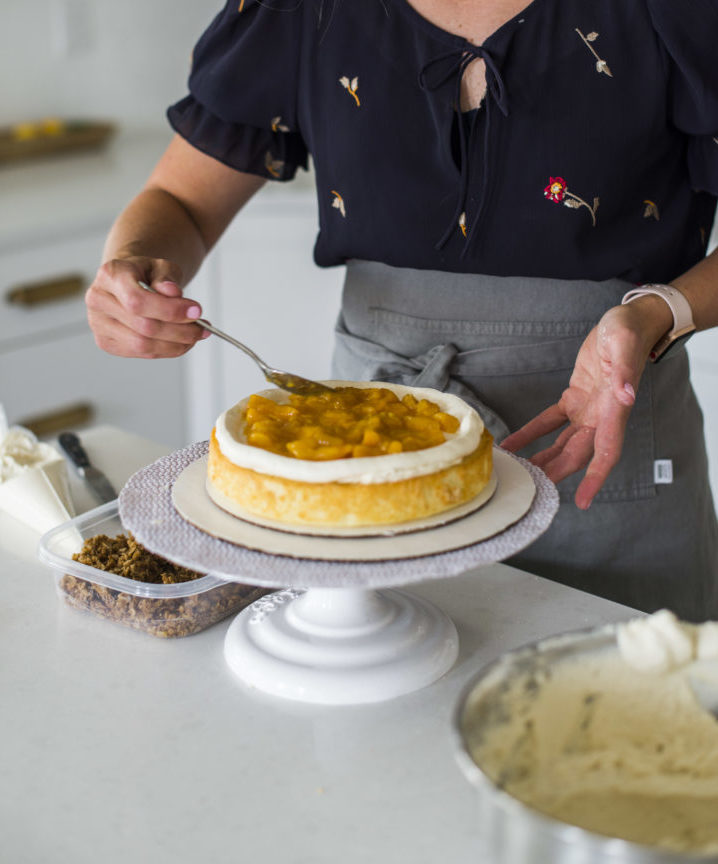
How to Properly Stack a Cake with a Soft Filling: Step 4
Place the second cake layer carefully on top of the filling.
How to Properly Stack a Cake with a Soft Filling: Step 5
If you have openings around your cake (like the pictures below), pipe more frosting around the outside of the cake to secure the filling.
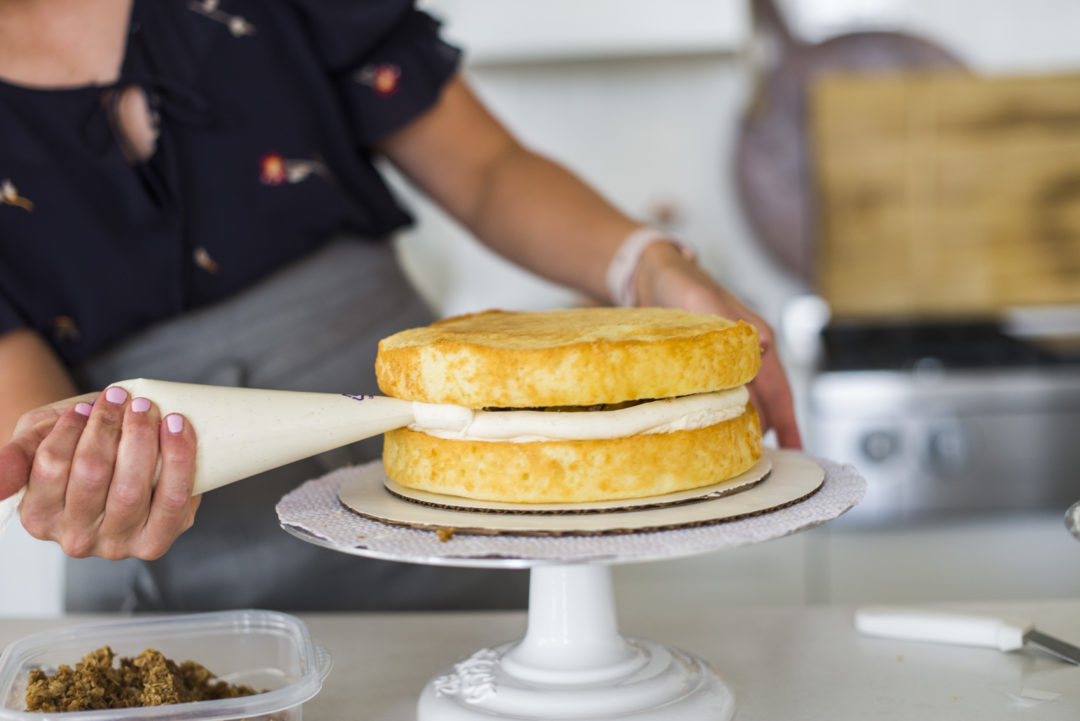
How to Properly Stack a Cake with a Soft Filling: Step 6
Place your final cake layer, bottom side up, on top of your cake and apply a light coat of frosting around the entire cake. This thin coat of frosting is your crumb coat. You’ll then want to freeze the cake for about 10 to 15 minutes to set the crumb coat and the filling before you continue to decorate the cake.
Additional Tips
A few more tips that might be helpful along the way:
- If you’re stacking a cake taller than 3-layers, I suggest using dowels or straws to help support the cake so it doesn’t wobble as you frost the sides.
- If you’re cake still feels wobbly after you’ve filled the cake, go ahead and freeze it for about 10 to 15 minutes BEFORE the crumb coat. This will help set the filling so your cake doesn’t slide around as you apply the crumb coat.
- Because you’re not using all of your filling between the cake layers, save the remaining filling and serve a spoonful of the filling on the side with each slide of cake.
More Tips & Recipes You’ll Love
Follow me on Instagram @cakebycourtney for more tips and recipes on all things cake!
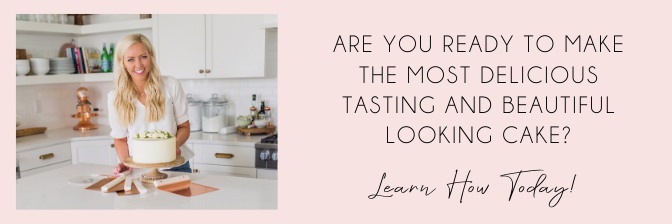

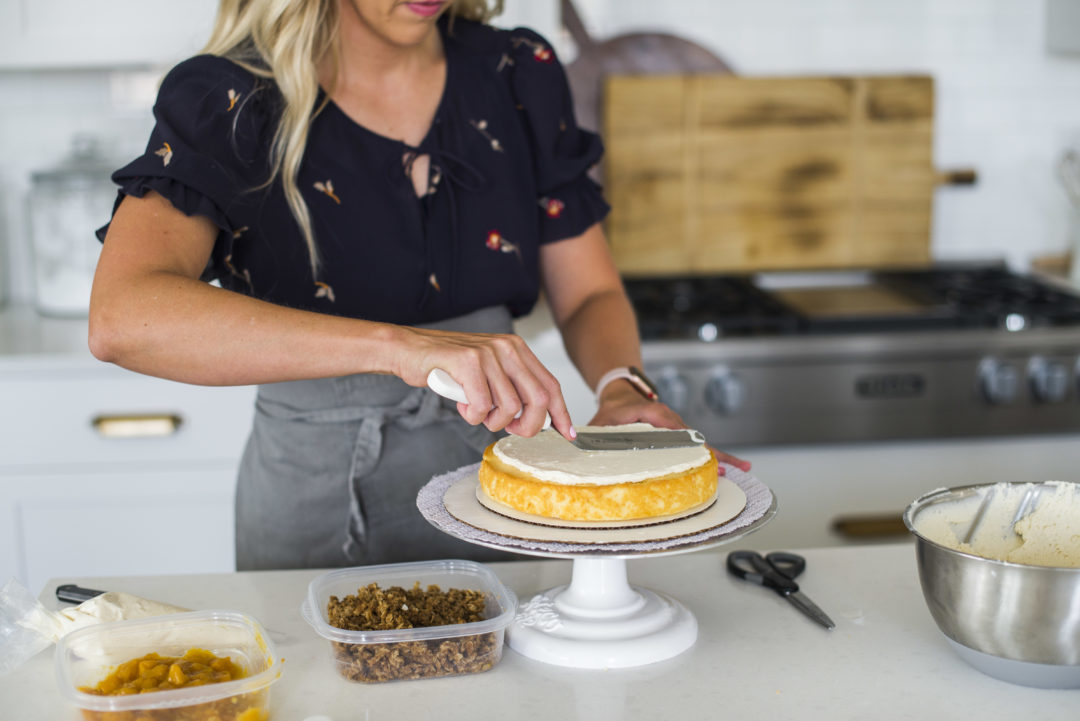
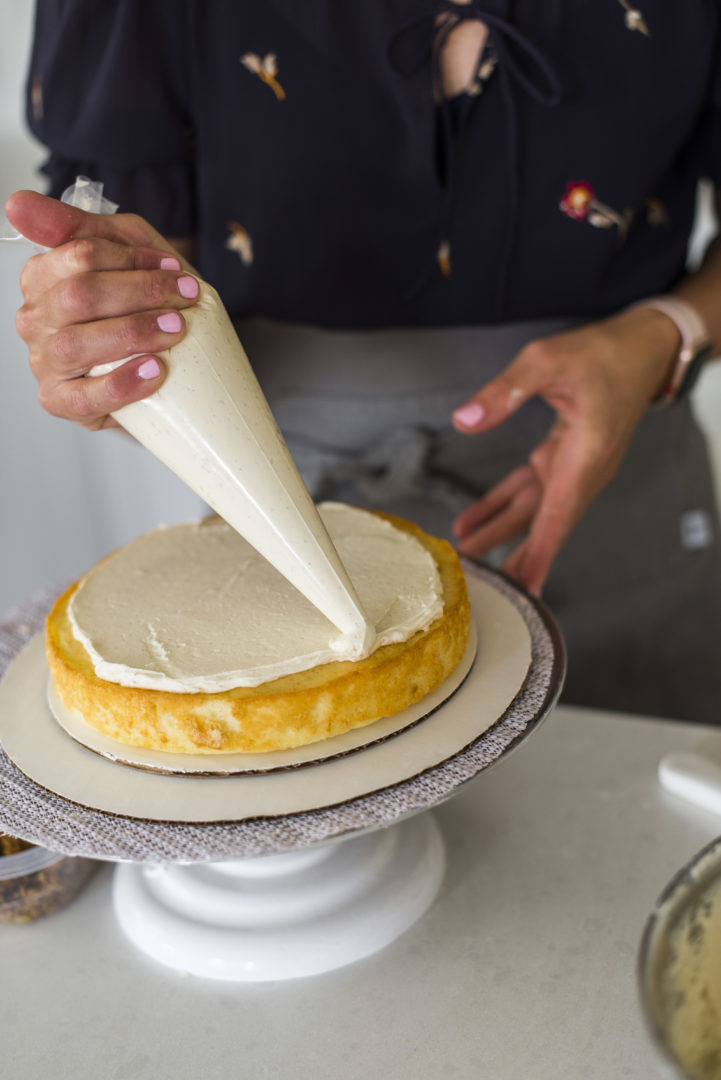
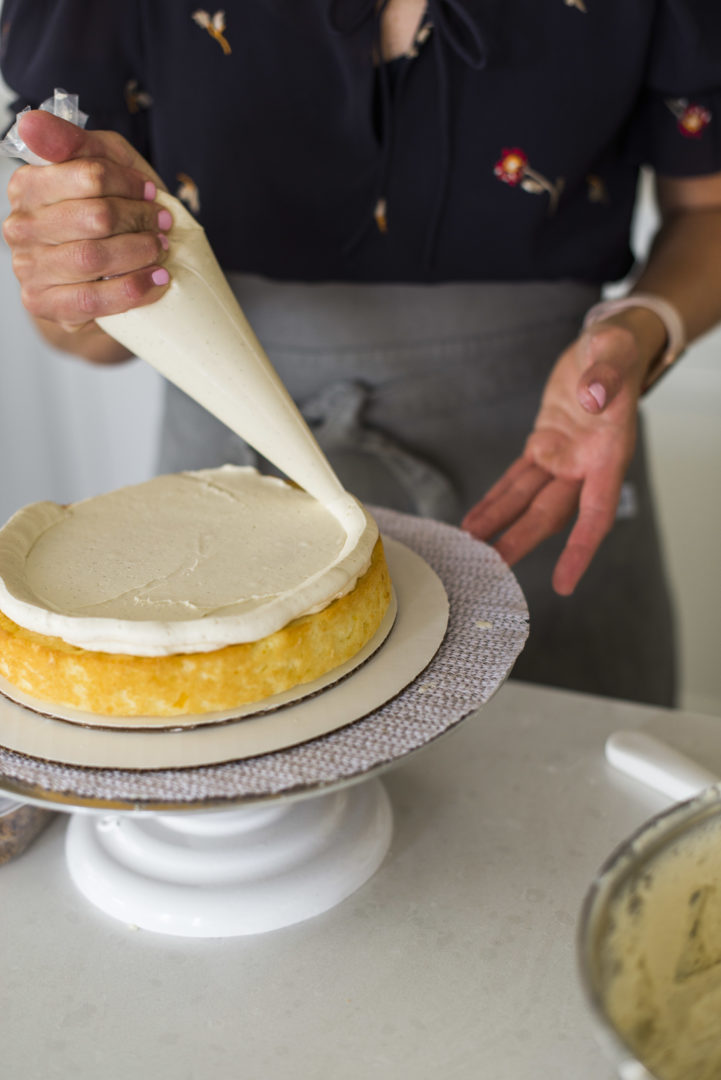
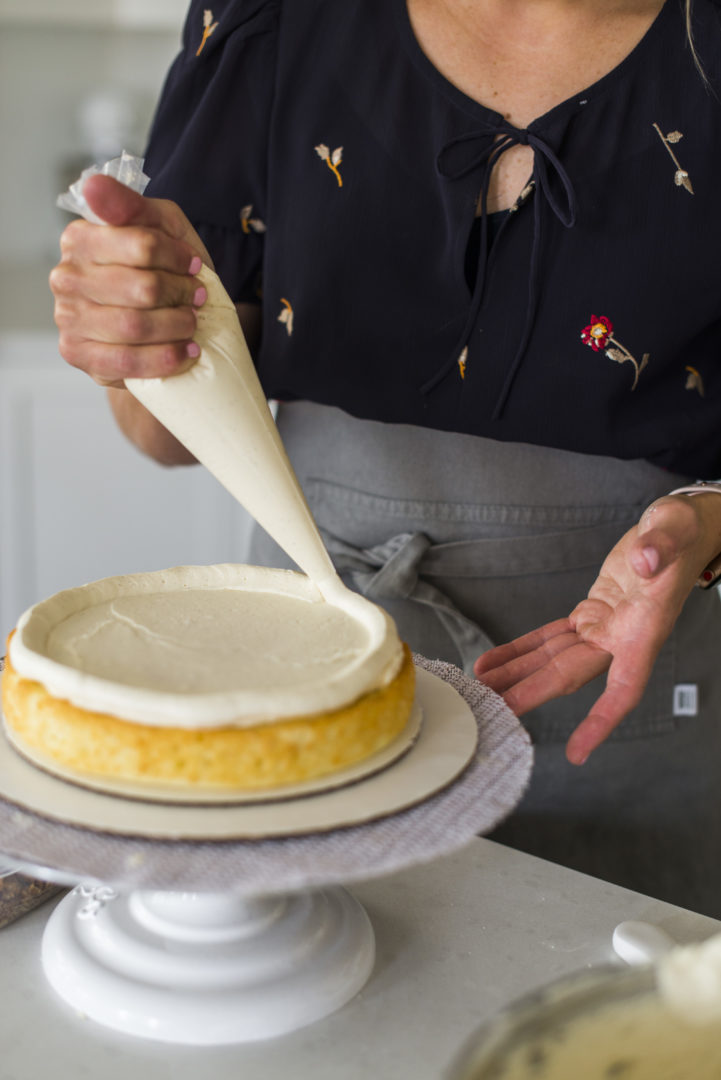
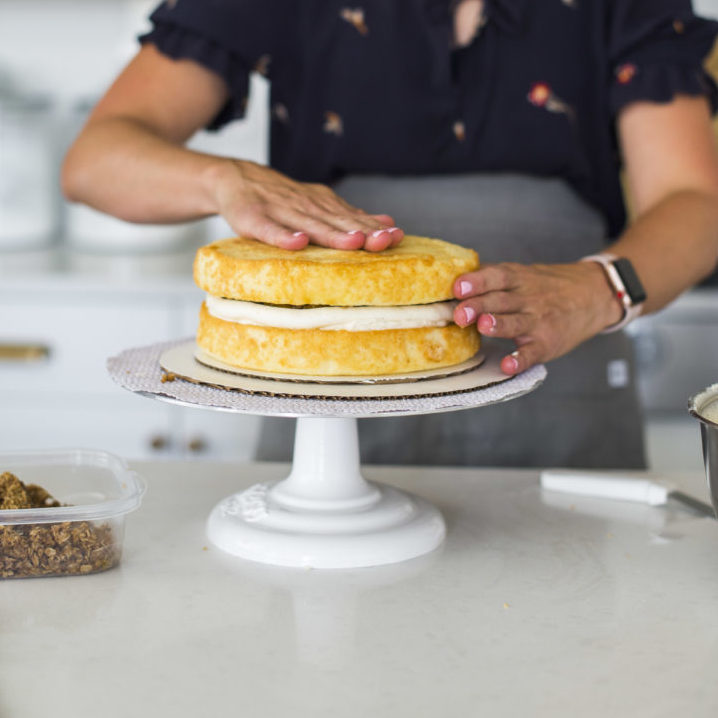
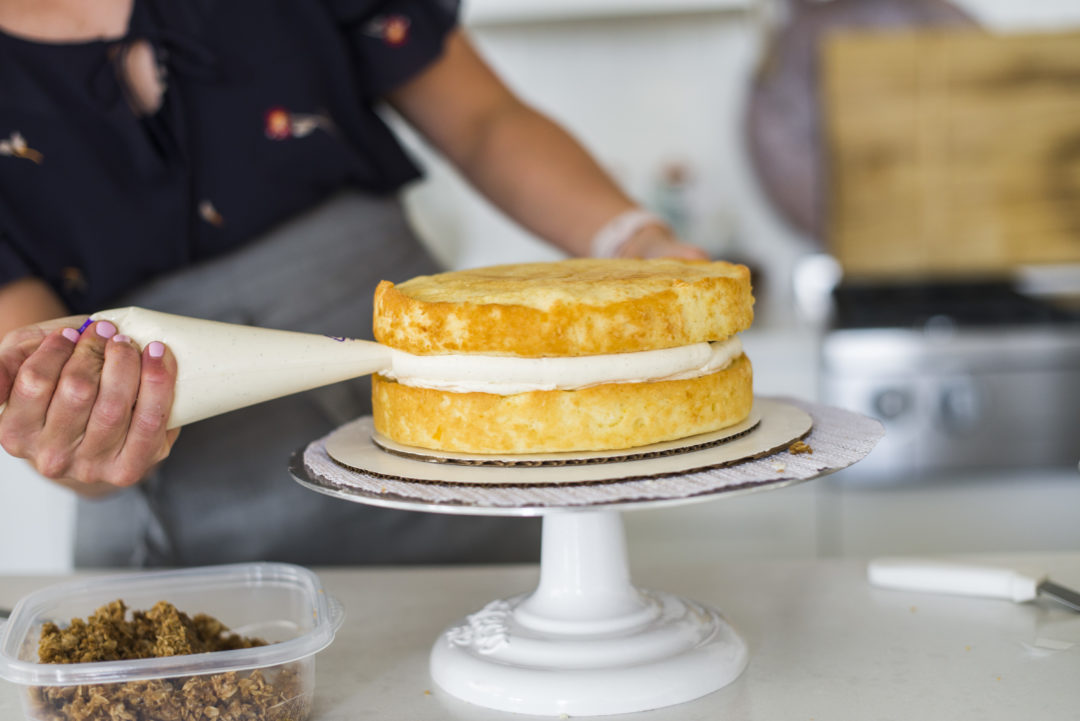
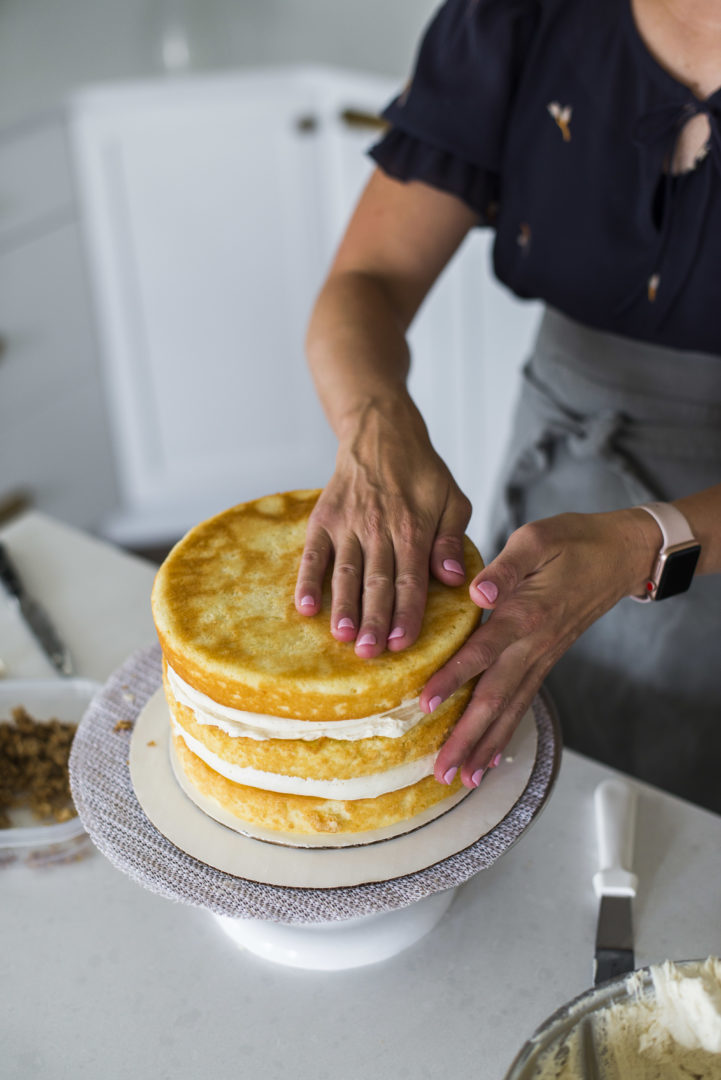
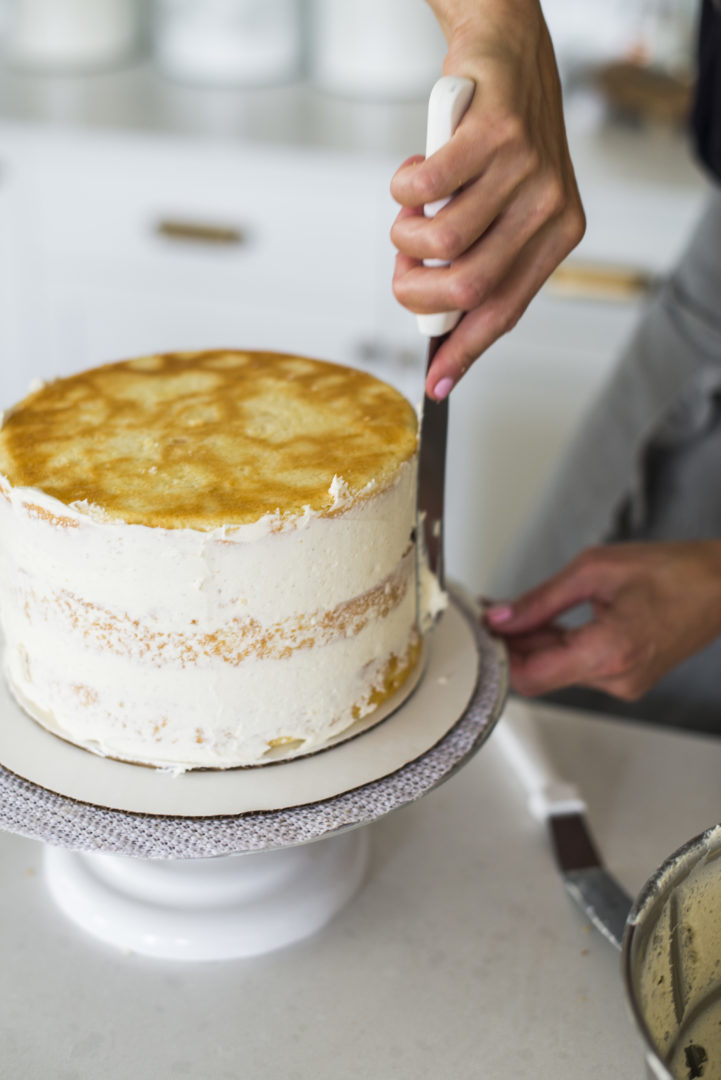
Hi,
I tried making your strawberry shortcake cake and I didn’t have a problem necessarily with a wobbly cake, but this is the 2nd cake I made where’s the cakes start to collapse. I know that they’re baked thoroughly, but they still start to cave in. Are my cakes not dense enough? I’ve made other cakes of yours and didn’t have any issues (St. Patrick’s cake with gold coins). I did notice that my bake times are mostly double and sometimes even quadruple the time you have listed. How does elevation play a role in the density of the cake? I’m in San Francisco and I believe it’s a lower elevation than where you are. Any tips and tricks would be greatly appreciated.
Hey! I’m so sorry to hear that. If your cakes are taking that much longer to bake than mine, there’s likely an issue with your oven. It may be telling you it’s at 350, but the internal temperature is probably running cool. Use an oven thermometer to check. Lower elevation won’t play a role in that. My cakes will work great in SF too. Are you using the same amount of pans as I am in the recipe? If you’re putting too much batter in the pans, that will cause an issue too.
Hi There! Any tips for filling a cake with stabilized whip cream and strawberry filling? I found that the whip cream would get absorbed by the cake layers.. Thank you in advance for any advice you can give!
If you are using a stabilized whipped cream, it shouldn’t be absorbed by the cake. There must be too much liquid in there somewhere, maybe from the strawberries.
I love making box cake mixes with different fillings and extracts. but the cake layers get soggy from the filling. Is there a coating or something to stop the moisture from soaking into the cake. My last venture was extra good, but soggy. I made yellow Cake adding some coconut and extract to the batter, filled with coconut filling. excellent flavor but soggy.
I always do a thin layer of buttercream before adding the filling to prevent this.
How can I prevent my cakes from getting soggy when I use filling between layers
You do a thin layer of buttercream before adding your soft filling!
Thanks so much for this. I baked my favorite cake today (yellow with lemon curd filling and lemon cream cheese frosting). Every time I’ve made this cake it has tasted wonderful, but it has been decidedly lopsided and homely. Google directed me to your site this morning, and by following your clear and well-photographed steps I ended up with a perfect-looking cake. I’ll be proud to present it at the party I’m attending tonight. Thanks!
Yay!
Hi there.
I made a wedding cake this summer (small, 6 inch, 3 layers tall) and just got the photos back and have noticed the slightest bulge/ ring around the middle of the cake, as if the filling is bulging out.
It is very subtle but I have never had anything like that happen before. I was wondering if you knew why something like this would happen or what causes this?
A bit of info on the cake:
– It had an American buttercream filling.
-They were frozen cake layers that we frozen upon stacking and icing.
– I crumb coated and chilled the cake before doing the good icing. I left it in the fridge for quite sometime before I took it out to good ice it.
– There was no ring or bulging when it left my house. It stayed in the fridge until it was picked up
– The cake was put on display in the summer. I do not know how long it was placed on display for.
– It was sweating a bit once I got the good layer placed.
Thank you for any advice you may have as I have never experienced this before.
It usually happens when the cake gets too warm.
I made a 20cm tall cake for my daughter’s 4th birthday with chocolate mousse filling and buttercream around each to hold it together. The cake collapsed overnight. 🙁 What could have I done better to avoid it happening?
Was it hot in your kitchen? How did you store it?